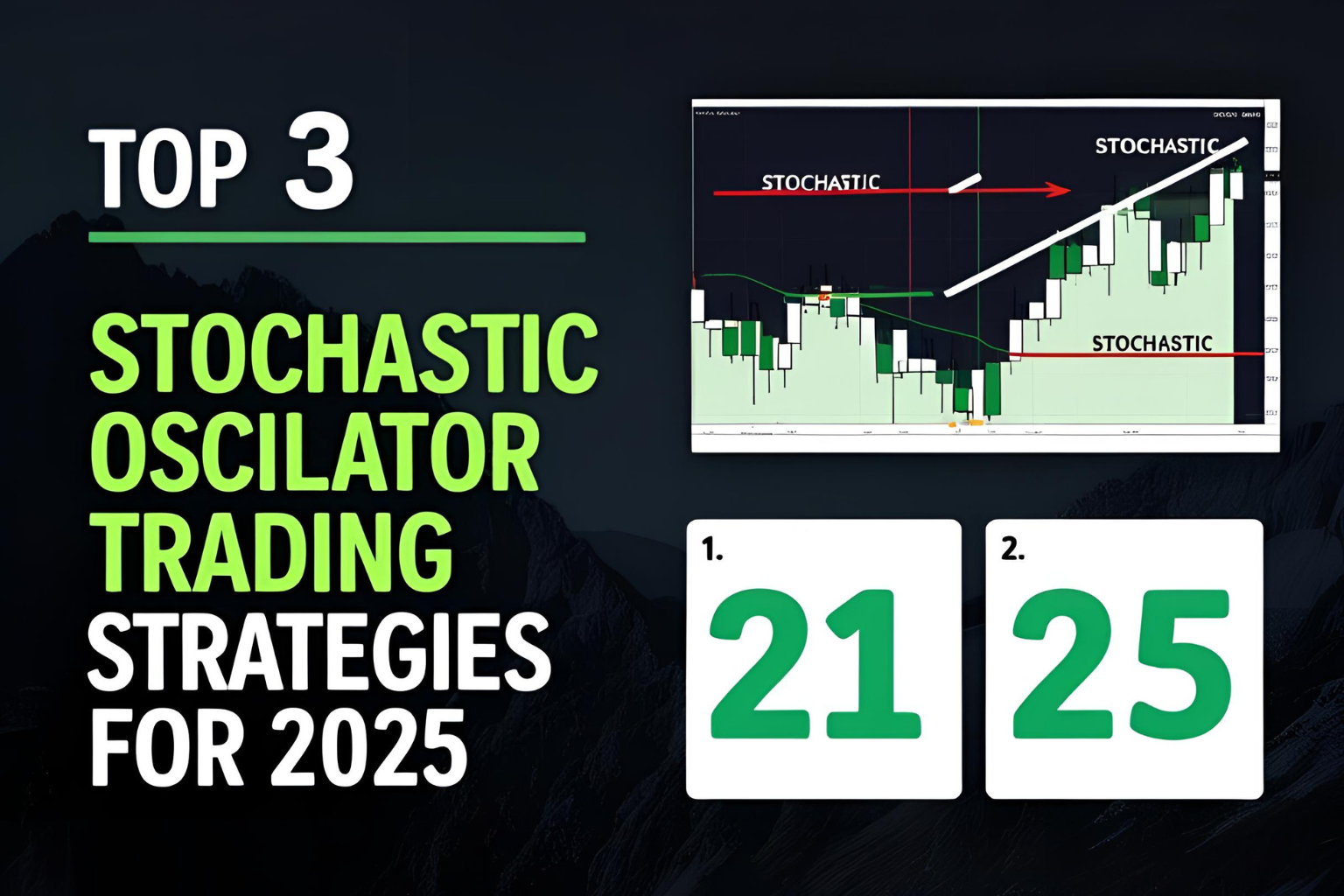Top 3 Stochastic Oscillator Trading Strategies for 2025
Introduction
The stochastic oscillator remains a key technical indicator in 2025, widely used by traders for momentum-based entries and exits. But its real power is unlocked when combined with structured strategies. In this post, we’ll walk you through the top 3 stochastic oscillator trading strategies—ideal for day traders, swing traders, and even position traders.
Strategy 1: Oversold/Overbought Reversal
This is the most basic and widely used strategy.
Setup:
- %K crosses above %D below the 20 level → Buy signal
- %K crosses below %D above the 80 level → Sell signal
Use case:
Range-bound markets where price is bouncing between support and resistance.
Timeframes:
5-min (scalping), 15-min or 1-hour (intraday), Daily (swing)
Tips:
- Avoid using in strong trends.
- Confirm with candlestick patterns (e.g., hammer, engulfing).
Strategy 2: Divergence Strategy
This strategy identifies potential trend reversals by comparing price and oscillator behavior.
Buy Setup:
- Price makes a lower low
- Stochastic makes a higher low (bullish divergence)
Sell Setup:
- Price makes a higher high
- Stochastic makes a lower high (bearish divergence)
Use case:
Reversal opportunities at key support or resistance zones.
Timeframes:
15-min to Daily
Tips:
- Use volume confirmation or support/resistance zones.
- Best used in fading extended moves or parabolic rallies.
Strategy 3: Multi-Timeframe Confirmation
This advanced approach filters out noise and aligns entries with the broader trend.
How it works:
- Use higher timeframe (e.g., 1-hour) to identify overall trend using stochastic.
- Drop down to lower timeframe (e.g., 15-min) for entry signal in the trend direction.
Example:
- 1-hour stochastic is rising and just crossed above 20
- 15-min stochastic gives a bullish crossover → Enter long
Use case:
High-accuracy entries in trend-following strategies.
Timeframes:
1-hour and 15-min, or Daily and 1-hour
Tips:
- Avoid counter-trend trades.
- Ideal for swing and positional trades with improved risk-reward.
Conclusion
These top stochastic oscillator trading strategies give traders structured approaches for various market conditions in 2025. Whether you prefer reversal setups, trend-following trades, or multi-timeframe analysis, each method can improve your trade timing and consistency. Test and adapt them based on your market and risk profile.
FAQs
Q1. Which stochastic strategy is best for beginners?
The basic overbought/oversold crossover is easiest to understand and apply.
Q2. Are these strategies good for crypto and forex?
Yes, stochastic works well across all asset classes including crypto, forex, and stocks.
Q3. Should I use stop-loss with stochastic strategies?
Always. Stochastic is great for signals, but proper risk management is essential.
Q4. Can I automate these strategies?
Yes, they can be coded into trading bots on platforms like TradingView, MetaTrader, or NinjaTrader.
Q5. How can I avoid false signals?
Use trend filters, volume analysis, and confluence zones for confirmation.





